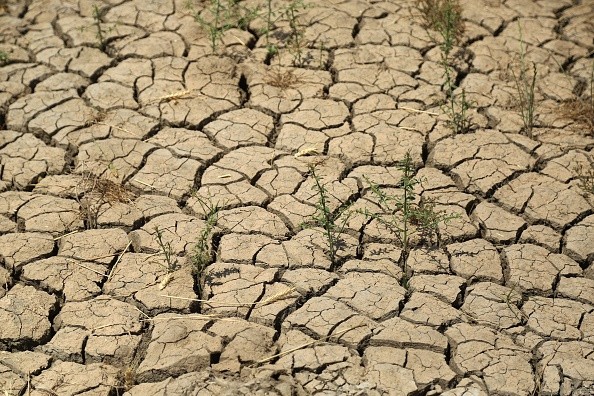Several of the 5,500 marine RNA virus species recently discovered by scientists may help push carbon absorbed from the atmosphere to permanent storage on the ocean floor, according to a study.

The findings also show that a tiny number of these newly discovered species have "borrowed" DNA from the infected animals, which might aid researchers in determining their supposed hosts and functions in marine processes.
A Greater Understanding
The research leads to a greater understanding of the outsized impact these small particles play in the ocean environment, in addition to charting a wealth of core ecological data.
"The findings are critical for model building and anticipating what is occurring with carbon in the right direction and at the right scale," said Ahmed Zayed, co-first author of the paper and a research scientist in microbiology at The Ohio State University.
When considering the immensity of the ocean, the topic of size is a crucial concern.
Professor of microbiology Matthew Sullivan of Ohio State University anticipates discovering viruses that, when created on a large scale, may act as programmable "knobs" on a biological pump that controls how carbon is deposited in the ocean.
"We're becoming increasingly conscious that we may need to adjust the pump at the ocean scale," he said. Sullivan says society relies on that technology cure but is challenging to solve.
Science published the study online.
Assessing Harms

These RNA viruses were discovered in plankton samples gathered by the Tara Oceans Consortium, a global study of the impact of climate change on the ocean conducted on board the schooner Tara. The international effort aims to learn more about the mysterious organisms that live in the sea and do the majority of the work of absorbing half of the human-generated carbon in the atmosphere and producing half of the oxygen we breathe to predict how the ocean will respond to climate change.
Though these marine viral species are not harmful to humans, they function like all viruses, infecting another creature and exploiting its cellular machinery to replicate themselves. Though the consequence may always be dangerous for the host, a virus's actions may have environmental advantages, such as assisting in dispersing a toxic algal bloom.
The key to determining their place in the ecosystem has been the development of computational approaches that can extract information on RNA virus activities and hosts from tiny genome segments by genomics standards.
Guillermo Dominguez-Huerta, a former postdoctoral researcher in Sullivan's lab, remarked, "We let the data be our guide."
The team used statistical analysis of 44,000 sequences to classify RNA virus communities into four ecological zones: Arctic, Antarctic, Temperate, and Tropical Epipelagic (closest to the surface, where photosynthesis occurs), and Temperate and Tropical Mesopelagic (most relative to the surface, where photosynthesis occurs) (200-1,000 meters deep). These zones are similar to the zone designations for the almost 200,000 marine DNA virus species found earlier by the researchers.
There were some unexpected outcomes. While biodiversity tends to increase near the equator and decrease near the poles, Zayed said a network-based ecological interaction study revealed the variety of RNA virus species in the Arctic and Antarctic was higher than predicted.
"Viruses don't care about the temperature when it comes to variety," he stated. "The great variety we see in polar locations is large because we have more viral species vying for the same host. We observe fewer species of hosts but more viral species infecting the same animals," says the researcher.
Identifying Hosts
To identify possible hosts, the researchers employed a combination of methods, first inferring the host from the viruses' categorization in the context of marine plankton and then generating predictions based on how the virus and host amounts "co-vary" since their abundances are dependent on one another. Finding evidence of RNA virus incorporation in cellular genomes was the third technique.
"The viruses we're researching don't insert themselves into the host genome, but many do by mistake, which is a hint about the host because if you discover a viral signal within a host genome, it means the virus was within the cell at some point," Dominguez-Huerta explained.
While most dsDNA viruses infect bacteria and archaea, which are widespread in the ocean, this recent study discovered that RNA viruses primarily infect fungus and microbial eukaryotes and invertebrates to a lesser level. Only a small percentage of marine RNA viruses can infect bacteria.
The researchers also discovered 72 distinct functionally different auxiliary metabolic genes (AMGs) sprinkled among 95 RNA viruses. These provided some of the best clues as to what kinds of organisms these viruses infect and what metabolic processes they're trying to reprogram to maximize virus "fabrication" in the ocean.
Further Research

Further network-based research discovered 1,243 RNA virus species linked to carbon export, with 11 being suggested to be active in facilitating carbon export to the ocean's bottom. Two viruses connected to algal hosts were chosen as the most promising targets for further investigation.
"We're getting to the point where we can create metabolic maps out of bags of genes," says Dr. Richard Sullivan, an associate professor of biogeosciences.
Sullivan, Dominguez-Huerta, and Zayed are Ohio State's EMERGE Biology Integration Institute members.
Related Article : Is Air Pollution Deadlier than Climate Change?
For more environmental news, don't forget to follow Nature World News!
© 2025 NatureWorldNews.com All rights reserved. Do not reproduce without permission.





